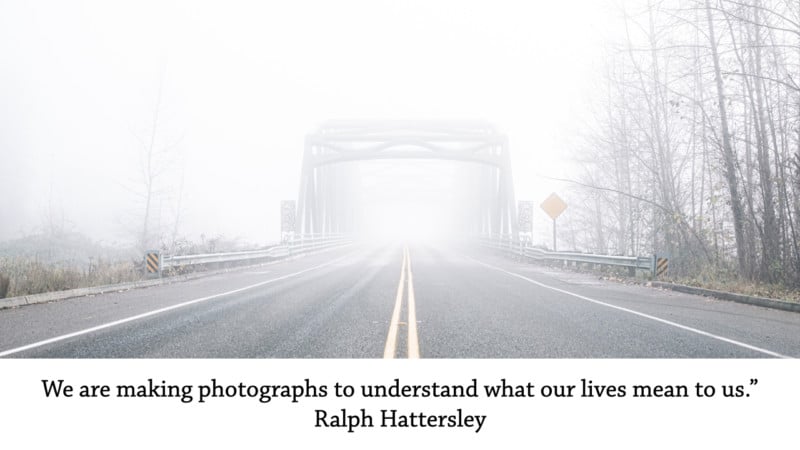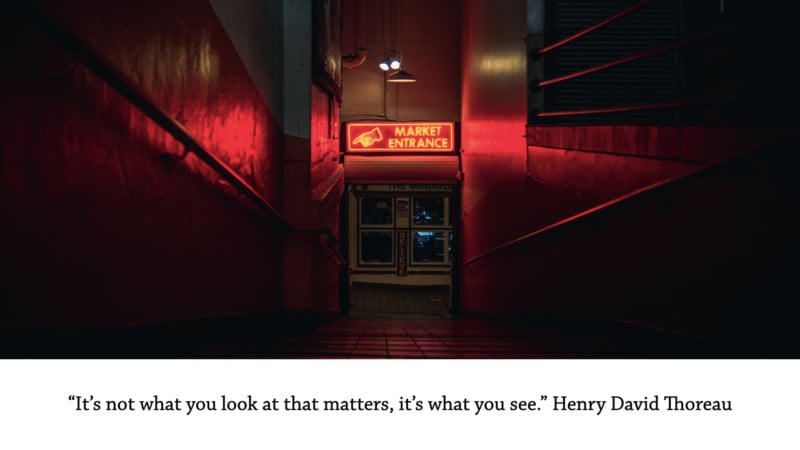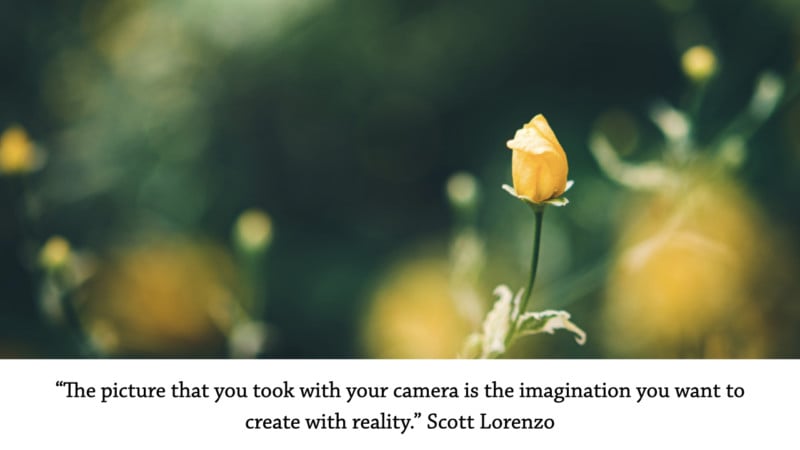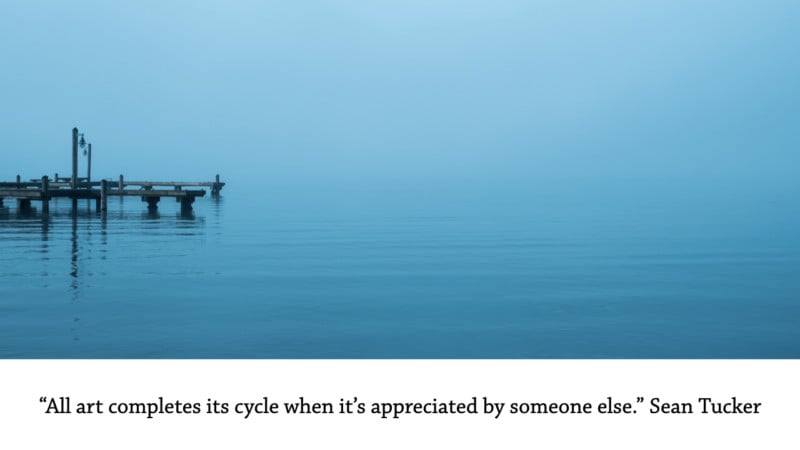Why do we create photos? Well, for a variety of reasons, but the one reason that connects them all is we feel we have made something that we want to share and we feel is worth time and attention. So, how can we create photos that are worthy of another’s time and attention?
When we share photos, the viewer will have a reaction to the photo, and a large portion of that reaction is personal and emotional. This is usually based on their unique life experiences. This emotional response to photos is difficult to quantify and evaluate — it just is. Usually, when there is a discussion about evaluating or critiquing photos, the discussion revolves around the more technical components that can be objectively observed, such as focus and sharpness, proper exposure for available light, and composition that emphasizes the subject and minimizes distractions.

I’d like to share a framework for photo creation and critique that I believe allows for a discussion of both the technical (objective) and emotional (subjective) components of a photo.
The framework revolves around the phrase “interesting photos.” In a time when hundreds of millions of photos are created and shared every day, how do we get attention to the photos we create? The answer is to create “interesting photos,” that is to say images that “hold attention.” To hold the attention requires showcasing something unique, rare, or different.

The photographic elements we use to hold attention are subject, light, composition, and processing. One way to create interest and hold attention is by sharing a photo with the viewer where those elements in total are unique, rare, or different.
Using a math metaphor to represent this, looks something like this:

What about the relatively common situation where one or more elements is not very interesting? Then, the remaining elements will have to have extra interest to offset the lack of interest in the other element(s) in order to create a photo that is, overall, interesting.
Thinking of creating photos while evaluating the levels of interest carried in each of these four elements has helped me understand more about why some photos “work” and some don’t.
We can’t always be in front of amazingly interesting subjects with inspiring light, but we can always work with composition, where have the most control. Where we place the camera and how we arrange the elements in the photo frame allows us to seek out potential ways to create interesting photos of what is in front of our cameras in the given light, without the need to lean too heavily on software magic to create interest.

Understanding that you don’t have to travel to exotic locations, wait for sunrise or sunset when the light is perfect, or have the perfect toning solutions in software opens up the possibility to create photos wherever you are at any time using interesting compositions.
Leaning on using interesting and unique compositions will allow for the potential to create interesting photos with ordinary subjects in ordinary light.
Get closer. Then, even a little closer. Explore the details and textures of your subjects or look for abstract patterns in light and shadow. Put the camera in a unique position relative to your subject. Get lower. Get above. Use the rule of thirds to align elements in your frame in a way that somehow scratches an itch in our brains.

As you practice using this framework while composing photos, it will become second nature to evaluate the amount of “interesting” that each building block element contains, and then make your composition decisions based on that evaluation. I hope you find this framework helpful as you create and critique your photos. Best wishes on the journey to more interesting photos!
About the author: Michael Sladek teaches digital photography at Highline College near Seattle, Washington. He enjoys dad jokes, doughnuts, and helping others discover the fun of creating photos they love. Stay connected with Michael on his website, YouTube channel, and Instagram.
Continue reading...
When we share photos, the viewer will have a reaction to the photo, and a large portion of that reaction is personal and emotional. This is usually based on their unique life experiences. This emotional response to photos is difficult to quantify and evaluate — it just is. Usually, when there is a discussion about evaluating or critiquing photos, the discussion revolves around the more technical components that can be objectively observed, such as focus and sharpness, proper exposure for available light, and composition that emphasizes the subject and minimizes distractions.
I’d like to share a framework for photo creation and critique that I believe allows for a discussion of both the technical (objective) and emotional (subjective) components of a photo.
The framework revolves around the phrase “interesting photos.” In a time when hundreds of millions of photos are created and shared every day, how do we get attention to the photos we create? The answer is to create “interesting photos,” that is to say images that “hold attention.” To hold the attention requires showcasing something unique, rare, or different.
The photographic elements we use to hold attention are subject, light, composition, and processing. One way to create interest and hold attention is by sharing a photo with the viewer where those elements in total are unique, rare, or different.
Using a math metaphor to represent this, looks something like this:
What about the relatively common situation where one or more elements is not very interesting? Then, the remaining elements will have to have extra interest to offset the lack of interest in the other element(s) in order to create a photo that is, overall, interesting.
Thinking of creating photos while evaluating the levels of interest carried in each of these four elements has helped me understand more about why some photos “work” and some don’t.
We can’t always be in front of amazingly interesting subjects with inspiring light, but we can always work with composition, where have the most control. Where we place the camera and how we arrange the elements in the photo frame allows us to seek out potential ways to create interesting photos of what is in front of our cameras in the given light, without the need to lean too heavily on software magic to create interest.
Understanding that you don’t have to travel to exotic locations, wait for sunrise or sunset when the light is perfect, or have the perfect toning solutions in software opens up the possibility to create photos wherever you are at any time using interesting compositions.
Leaning on using interesting and unique compositions will allow for the potential to create interesting photos with ordinary subjects in ordinary light.
Get closer. Then, even a little closer. Explore the details and textures of your subjects or look for abstract patterns in light and shadow. Put the camera in a unique position relative to your subject. Get lower. Get above. Use the rule of thirds to align elements in your frame in a way that somehow scratches an itch in our brains.
As you practice using this framework while composing photos, it will become second nature to evaluate the amount of “interesting” that each building block element contains, and then make your composition decisions based on that evaluation. I hope you find this framework helpful as you create and critique your photos. Best wishes on the journey to more interesting photos!
About the author: Michael Sladek teaches digital photography at Highline College near Seattle, Washington. He enjoys dad jokes, doughnuts, and helping others discover the fun of creating photos they love. Stay connected with Michael on his website, YouTube channel, and Instagram.
Continue reading...


